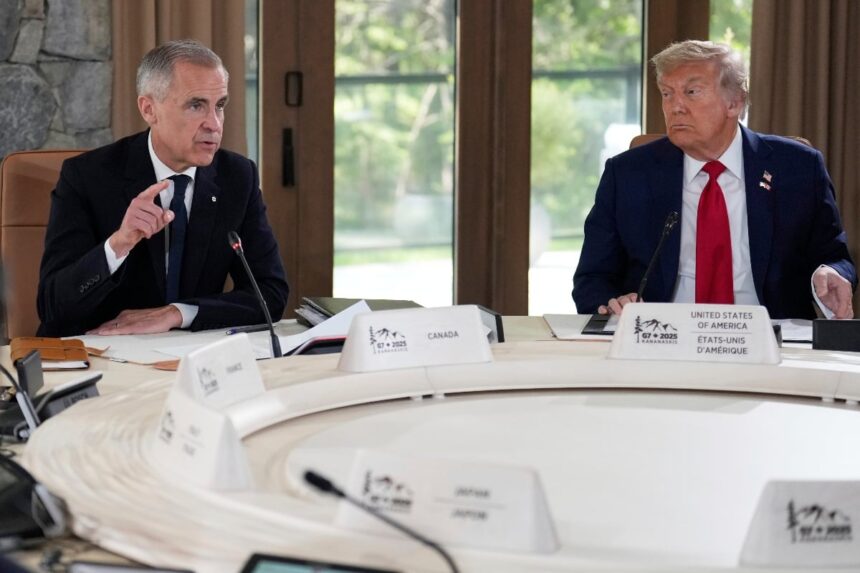In an extraordinary display of national unity, Prime Minister Justin Trudeau convened an emergency virtual meeting with provincial premiers and key cabinet ministers Thursday evening, as Canada grapples with the sudden economic threat posed by Washington’s newly announced tariff proposals.
The hastily arranged summit comes less than 24 hours after U.S. President Harris revealed plans for sweeping new import duties targeting Canadian steel, aluminum, and agricultural products—a move that analysts estimate could impact over $47 billion in cross-border trade annually.
“We’re facing a critical moment that requires a unified Canadian response,” Trudeau told the assembled leaders, according to sources familiar with the discussions. “The proposed tariffs represent not just an economic challenge, but a fundamental test of our trading relationship with our closest partner.”
The meeting, which stretched nearly three hours, focused on developing a coordinated federal-provincial strategy that balances diplomatic engagement with potential retaliatory measures. Sources indicate the discussions were notably free from the partisan divisions that have characterized recent federal-provincial relations on climate policy and healthcare funding.
Alberta Premier Danielle Smith, often a vocal critic of federal policies, struck a collaborative tone following the meeting. “When it comes to defending Canadian workers and industries against unfair trade practices, we stand united with Ottawa,” Smith stated. “This isn’t about politics—it’s about protecting hundreds of thousands of Canadian jobs.”
Economic analysis presented during the summit painted a sobering picture. The Finance Ministry projects the tariffs could reduce Canadian GDP growth by 0.8 percentage points and potentially eliminate up to 85,000 jobs across manufacturing, resource extraction, and agricultural sectors.
Quebec Premier François Legault emphasized the disproportionate impact the proposed measures would have on his province’s aluminum industry. “We’re talking about communities where one in three jobs depends directly or indirectly on aluminum production,” Legault said. “These tariffs aren’t just numbers on a spreadsheet—they threaten the livelihood of entire regions.”
The federal cabinet is considering multiple response options, including targeted counter-tariffs on American imports, challenges through both NAFTA 2.0 dispute mechanisms and the World Trade Organization, and direct diplomatic appeals to key U.S. congressional leaders.
International Trade Minister Mary Ng confirmed she will travel to Washington next week to meet with her American counterpart. “We’re committed to resolving this through dialogue first,” Ng stated. “Canada and the United States have the most successful trading relationship in the world, with nearly $2 billion in goods and services crossing our border daily.”
Industry representatives from affected sectors have been invited to participate in a follow-up technical briefing scheduled for Monday. The Canadian Steel Producers Association estimates the proposed 25% tariff on steel products would increase costs for Canadian manufacturers by approximately $3.4 billion annually.
“The integrated nature of North American supply chains means these tariffs will ultimately harm American consumers and businesses as well,” noted Perrin Beatty, president of the Canadian Chamber of Commerce. “Higher input costs will be passed along to U.S. consumers at a time when inflation remains a significant concern.”
As diplomatic efforts intensify, the fundamental question remains: can Canada successfully navigate these trade tensions without triggering a broader economic confrontation with its largest trading partner, or are we witnessing the beginning of a new, more protectionist era in North American commerce?










